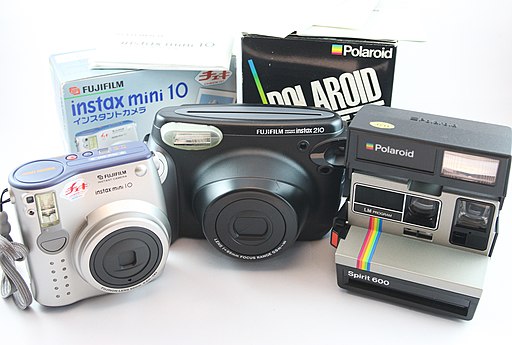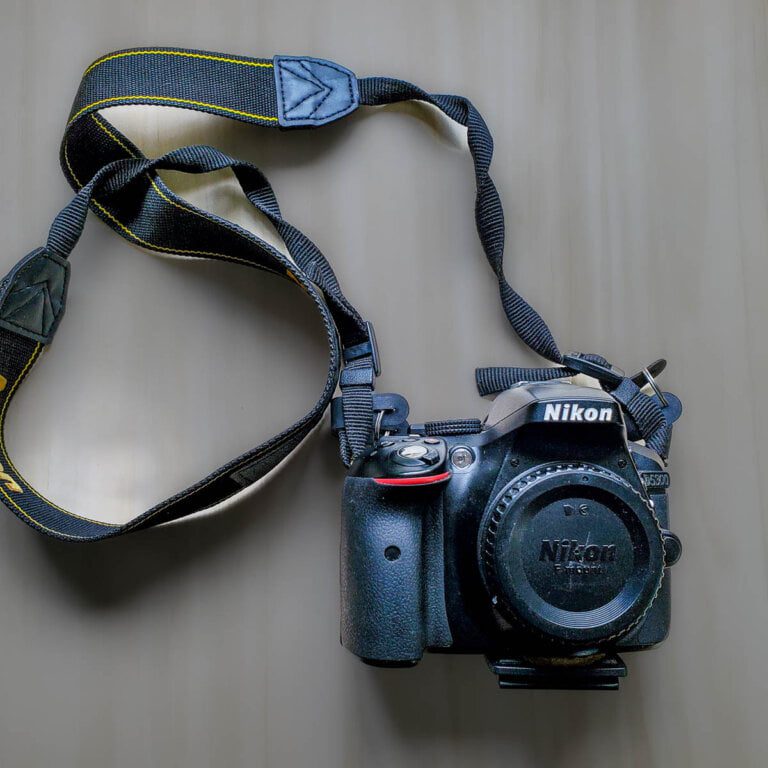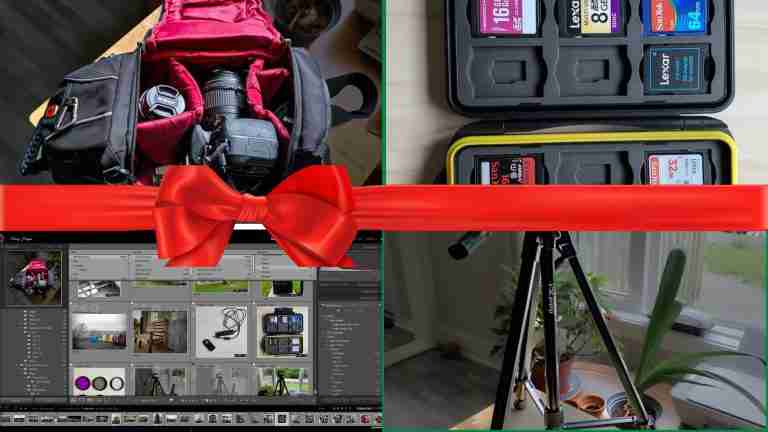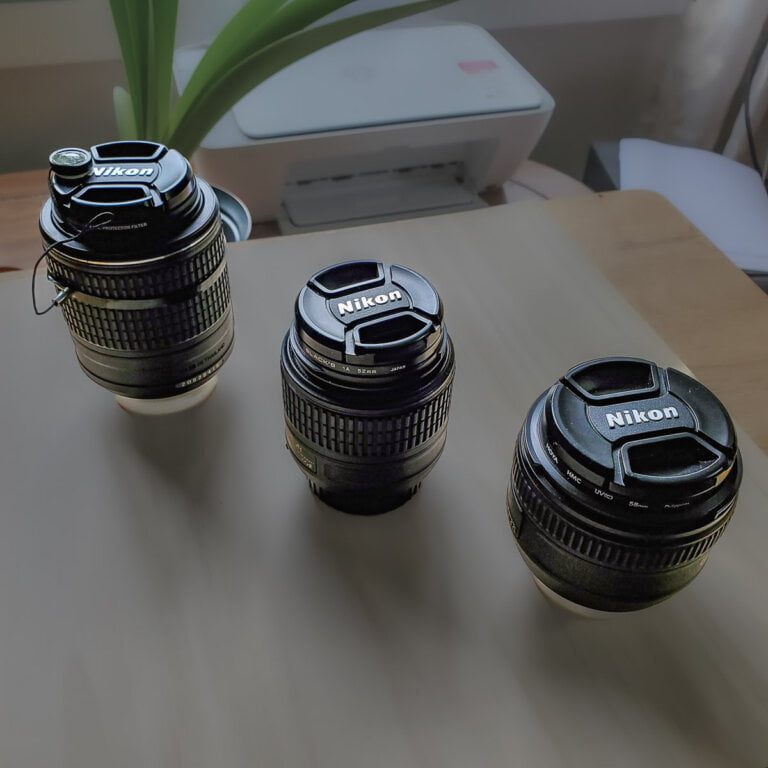The Top 6 Types of Cameras: A Comprehensive Guide to Choosing the Right One for Your Photography
Hey there Shutterbug, just wanted to let you know that some of the links on this site may be Amazon Affiliate or affiliate links,. which means I may earn a small commission if you make a purchase after clicking on them. But don't worry, it won't cost you any extra – in fact, sometimes you may even get a special discount! So if you do decide to buy something through my links, know that you'll be supporting my work and helping me bring more helpful content your way. Thank you for your support, you're like a superhero to my work! I couldn't do it without you, unless I suddenly develop the ability to clone myself...which, honestly, would be pretty cool.
Whether you’re a professional photographer or a casual shutterbug, choosing the right camera is crucial to capturing your vision. With so many types of cameras on the market, it’s easy to get lost in a sea of specs and features. But fear not! In this post, we’ll take you on a journey through the wonderful world of cameras, from point-and-shoots to medium formats, and help you navigate the options to find your perfect match. So buckle up and get ready to discover your new favourite tool!
Welcome to the comprehensive guide on choosing the right camera for your photography needs! As a photographer, you understand that a camera is more than just a tool – it’s an extension of your creative vision. Whether you’re a professional photographer, an aspiring artist, or a casual hobbyist, the right camera can help you capture breathtaking shots and express your unique perspective. However, with so many types of cameras available in the market, it can be challenging to know which one to choose.
That’s where I come in! In this post, I’ll take you on a journey through the wonderful world of cameras, exploring the different types of cameras, explaining their features and benefits, and providing you with practical tips to help you pick the best one for your photography goals. From point-and-shoots to DSLRs, and mirrorless cameras to medium formats, each camera type has its own strengths and weaknesses, and finding the right fit for you can make all the difference in capturing the shots you want.
I understand that choosing a camera can be a significant investment of time and money, and that’s why I’ve created this guide to help you make an informed decision. Whether you’re looking for a camera for travel photography, wedding photography, portrait photography, or any other type of photography, this guide has got you covered. So grab your favourite drink, sit back, and get ready to explore the exciting world of cameras!
TLDR; Summary of Types of Cameras
| Camera Type | Pros | Cons |
|---|---|---|
| Point and Shoot | Compact, easy to use, affordable | Limited manual control, image quality may not match up to other types |
| DSLR | Wide range of lenses and accessories, advanced manual controls | Bulky, expensive, steep learning curve |
| Mirrorless | Lightweight and compact, advanced features and manual control | Limited battery life, expensive lenses |
| Medium Format | Superior image quality, wide dynamic range, professional level camera | Expensive, bulky, limited availability |
| Instant | Immediate prints, nostalgic appeal, easy to use | Limited control, expensive film |
| Mobile Phone | Convenient, always with you, constantly improving | Limited manual control, image quality may not match up to other types |
Remember, these pros and cons are just general guides and may not apply to all models within each camera type. It’s important to do your own research and test out different options before making a purchase decision.
Read on for more details about the types of cameras.
1. Point and Shoot Cameras
Best for: casual photography, beginners, travel, and everyday use
 D-Kuru, CC BY-SA 3.0 AT, via Wikimedia Commons
D-Kuru, CC BY-SA 3.0 AT, via Wikimedia CommonsPoint-and-shoot cameras have come a long way since they first hit the market in the 1990s. They used to be known as “automatic cameras” because they were simple, compact, and easy to use. However, today’s point-and-shoot cameras offer a variety of features and capabilities that make them a popular choice for casual photographers, travellers, and anyone who wants a small, convenient camera that can deliver high-quality photos.
What is a Point-and-Shoot Camera?
A point-and-shoot camera is a type of digital camera that is designed for easy operation, portability, and convenience. They typically have a fixed lens, a small sensor, and automatic exposure settings, which means you can simply point the camera at your subject and press the shutter button to take a picture.
Pros and Cons of Point-and-Shoot Cameras
Advantages of Point-and-Shoot Cameras
- Portability and Convenience: Point-and-shoot cameras are small, lightweight, and easy to carry, making them an excellent choice for travel or everyday use.
- Simplicity: With automatic settings, point-and-shoot cameras require little to no technical knowledge, making them an ideal choice for beginners or casual photographers.
- Affordability: Point-and-shoot cameras are often less expensive than other types of cameras, making them an accessible choice for budget-conscious photographers.
- Low-Light Performance: Many point-and-shoot cameras come with built-in flashes and low-light capabilities, allowing you to capture photos in dimly lit environments.
- Versatility: Some point-and-shoot cameras come with features such as Wi-Fi connectivity, GPS tagging, and even waterproofing, making them suitable for a wide range of photography needs.
Disadvantages of Point-and-Shoot Cameras
- Limited Control: With automatic settings, point-and-shoot cameras don’t offer as much control over settings such as aperture, shutter speed, and ISO as other types of cameras do.
- Image Quality: While many point-and-shoot cameras offer excellent image quality, the smaller sensor size can result in images that are not as sharp or detailed as those taken with larger sensors.
- Fixed Lens: Point-and-shoot cameras typically come with a fixed lens, so you can’t swap it out for a different lens like you can with interchangeable lens cameras.
Final Thoughts on Point and Shoot Cameras
Point-and-shoot cameras may not be as powerful or versatile as other types of cameras, but they offer a level of convenience, portability, and ease of use that makes them an excellent choice for many photographers. Whether you’re a beginner, a casual shooter, or a seasoned pro looking for a backup camera, there’s a point-and-shoot camera out there that can meet your needs. With their automatic settings and small size, point-and-shoot cameras are perfect for capturing everyday moments and memories that you’ll cherish for years to come.
2. Mirrorless Cameras
Best for: intermediate and advanced photographers, street photography, and video recording
 Photo Credit: Bengt Nyman from Vaxholm, Sweden, CC BY 2.0, via Wikimedia Commons
Photo Credit: Bengt Nyman from Vaxholm, Sweden, CC BY 2.0, via Wikimedia CommonsIntroducing Mirrorless Cameras
What Are They? If you’re not already familiar with mirrorless cameras, they’re a relatively new type of camera that has gained popularity in recent years. Essentially, they’re a cross between a traditional DSLR camera and a point-and-shoot camera. They offer many of the benefits of a DSLR, such as the ability to change lenses and manual controls, but they’re often smaller and more portable, like a point-and-shoot camera.
Pros and Cons of Mirrorless Cameras
Advantages of Mirrorless Cameras
- There are several advantages to using a mirrorless camera. For starters, they’re often smaller and lighter than DSLRs, making them easier to carry around with you on the go. Additionally, because they don’t have a mirror inside the camera, they can shoot at much faster speeds and with less shutter lag, allowing you to capture fast-moving action with ease.
- Size and Portability One of the biggest selling points of mirrorless cameras is their size and portability. They’re often much smaller and lighter than DSLRs, making them a great option for photographers who want to travel light or take photos on the go. Plus, because they’re smaller, they’re often less obtrusive and can be used more easily in public places.
- Fewer Moving Parts Another advantage of mirrorless cameras is that they often have fewer moving parts than DSLRs, which means there’s less chance of something breaking or malfunctioning. This can make them more reliable and less prone to mechanical failure, which is especially important if you’re using your camera professionally.
- Faster Shooting Speeds Because mirrorless cameras don’t have a reflex mirror, they can shoot at much faster speeds than DSLRs, which can be a huge advantage when shooting fast-moving action. Additionally, they often have faster autofocus systems, which can help you get sharp, clear photos even in challenging lighting conditions.
- Electronic Viewfinders One of the biggest differences between mirrorless cameras and DSLRs is that they use electronic viewfinders instead of optical viewfinders. This can take some getting used to, but it also offers some advantages. For example, electronic viewfinders can show you exactly what your photo will look like before you take it, which can be a huge help when composing your shots.
Disadvantages of Mirrorless Cameras
While there are many advantages to using a mirrorless camera, there are also some disadvantages to consider.
- They can be more expensive than DSLRs, especially if you’re looking for a high-end model
- They’re a relatively new technology and so there are fewer lenses and accessories available for them.
Who Should Consider a Mirrorless Camera?
If you’re looking for a camera that’s portable, fast, and versatile, a mirrorless camera might be a great option for you. They’re especially popular among travel photographers, street photographers, and anyone who needs to move quickly and capture action shots on the go.
Final Thoughts on Mirrorless Camera
Is a Mirrorless Camera Right for You? At the end of the day, whether or not a mirrorless camera is right for you depends on your specific needs and preferences. If you value portability, speed, and versatility, and don’t mind the higher cost and electronic viewfinder, a mirrorless camera might be the perfect choice for you.
3. DSLR Cameras
(Learn the buttons on your DSLR Camera here.)
Best for: professional photographers, sports, wildlife, and portrait photography

Are you looking for a camera that can capture high-quality, professional-grade photos? If so, then you might want to consider a DSLR camera. DSLR stands for Digital Single-Lens Reflex and these cameras are popular among photographers for their high image quality, interchangeable lenses, and full manual controls. Let’s dive into what DSLR cameras are, their features, advantages and disadvantages, and who they’re best suited for.
What is a DSLR Camera?
DSLR cameras use a mirror and prism system to reflect light through the lens and onto the camera’s image sensor. They typically have larger image sensors than point-and-shoot cameras, which allows them to capture more detail and produce higher-quality images. Additionally, DSLR cameras often come with a variety of manual controls that allow photographers to fine-tune settings like shutter speed, aperture, and ISO.
One of the key features of DSLR cameras is their ability to interchange lenses. This allows photographers to choose lenses that are best suited for their specific shooting needs. For example, a wide-angle lens might be used for landscape photography, while a telephoto lens might be used for sports or wildlife photography.
Pros and Cons of DSLR Cameras
Advantages of DSLR Cameras
- Interchangeable lenses allow for a wide range of creative options and shooting styles
- Larger sensors provide better image quality and low-light performance
- Fast autofocus and high-speed burst shooting capabilities make them ideal for action and sports photography
- Wide range of accessories and add-ons available to customize and enhance the camera’s capabilities
- The optical viewfinder allows for a direct and clear view of the scene
Disadvantages of DSRL Cameras
- Larger and heavier than other camera types, making them less portable and more cumbersome to carry around
- The complexity of the camera and its features can be overwhelming for beginners
- Typically more expensive than point-and-shoot or mirrorless cameras
- Noisier operation due to the flipping mirror mechanism
- Limited video capabilities compared to mirrorless cameras
Who are DSLR Cameras For?
DSLR cameras are best suited for photographers who are serious about their craft and need the high-quality images and manual controls that DSLRs offer. They’re also a good choice for photographers who need the flexibility of interchangeable lenses. However, if you’re looking for a camera that’s compact and easy to use, a point-and-shoot or mirrorless camera might be a better fit.
Final Thoughts on DSLR Cameras
In conclusion, DSLR cameras are a great choice for photographers who want to capture high-quality, professional-grade photos. With their larger sensors, manual controls, and interchangeable lenses, DSLRs offer a lot of flexibility and creative control. However, they can be bulky and complicated to use, so they might not be the best choice for everyone. Ultimately, the type of camera you choose will depend on your specific needs and preferences as a photographer.
4. Medium Format Cameras
Best for: professional photographers, commercial, fashion, and studio photography
 Photo Credit: B4silio, CC BY-SA 4.0, via Wikimedia Commons
Photo Credit: B4silio, CC BY-SA 4.0, via Wikimedia CommonsIf you’re a professional photographer or an enthusiast looking to take your photography to the next level, you might be interested in medium-format cameras. These cameras are known for their large image sensors, high resolution, and exceptional image quality. In this section, we’ll examine medium format cameras, their features, advantages, and disadvantages, and help you decide if they’re the right choice for you.
What are Medium Format Cameras?
Medium format cameras are known for their large image sensors, typically measuring 6 x 4.5 cm or larger. This larger sensor size allows for higher resolution and more detail in the images. They also typically have a higher dynamic range, allowing for greater detail in both the highlights and shadows. Medium format cameras often have a modular design, allowing for interchangeable lenses and viewfinders, as well as a range of accessories.
Advantages of Medium Format Cameras
- Exceptional image quality, with high resolution and detail
- High dynamic range, allowing for more detail in highlights and shadows
- Modular design allows for customization and flexibility
- Interchangeable lenses for a wide range of creative options
- Typically have larger and brighter viewfinders than other camera types
Disadvantages of Medium Format Cameras
- Larger and heavier than other camera types, making them less portable and more cumbersome to carry around
- Higher cost, with both the camera body and lenses being more expensive than other camera types
- Slower autofocus and shooting speed compared to other camera types
- A steep learning curve, with complex features and settings that can be overwhelming for beginners
Who Medium Format Cameras Are For
Medium format cameras are typically used by professional photographers and advanced enthusiasts who demand the highest image quality and resolution. They’re ideal for studio and landscape photography, as well as for those who need large prints or detailed crops.
Final Thoughts on Medium Format Cameras
Medium format cameras are not for everyone, but for those who demand the best image quality and resolution, they’re worth the investment. They’re larger and heavier than other camera types, but the image quality and flexibility they offer make them a valuable tool for professional and advanced photographers alike. If you’re considering a medium-format camera, take the time to research and test different models to find the right one for your needs.
5. Instant Cameras
Best for: instant gratification, nostalgia, and fun photography
 Zebrio, CC BY-SA 2.0, via Wikimedia Commons
Zebrio, CC BY-SA 2.0, via Wikimedia CommonsInstant cameras have become increasingly popular over the years due to their unique features and ability to capture and print images instantly. In this section, we’ll dive more in-depth into instant cameras, their features, advantages, and disadvantages, and help you determine if they’re the right fit for you.
What are Instant Cameras?
Instant cameras, also known as polaroid cameras, are a type of camera that uses self-developing film to capture and print images instantly. These cameras come in different sizes, shapes, and colours, with a variety of features such as adjustable brightness, flash, and self-timer. Many instant cameras also come with built-in lenses, while others offer interchangeable lenses for added versatility.
Pros and Cons of Instant Cameras
Advantages of Instant Cameras
- Instant gratification: With an instant camera, you can see and hold your photos in your hands right after you take them, without the need for additional equipment or processing.
- Fun and unique: Instant cameras offer a fun and unique way to capture and share memories, perfect for events, parties, and everyday adventures.
- User-friendly: Instant cameras are easy to use and operate, making them ideal for beginners or anyone looking for a simple and hassle-free photography experience.
Disadvantages of Instant Cameras
- Limited control: Instant cameras typically have limited manual controls, which may limit your ability to adjust settings such as exposure and focus.
- Cost: Instant film can be expensive, with each photo costing anywhere from a few cents to a dollar or more.
- Quality: Instant cameras may not produce the same level of image quality as digital or film cameras, with lower resolution and image clarity.
Who They Are For
Instant cameras are great for anyone looking for a fun and easy way to capture and share memories, without the need for additional equipment or processing. They are ideal for events, parties, and everyday adventures, and can be a great option for beginners or anyone looking for a simple and hassle-free photography experience.
Final Thoughts on Instant Cameras
Instant cameras offer a unique and fun way to capture and share memories, with their ability to instantly print photos. While they may not offer the same level of control or image quality as digital or film cameras, they make up for it with their ease of use and instant gratification. If you’re looking for a simple and fun way to capture memories, an instant camera might just be the perfect fit for you
6. Mobile Phone Cameras
In today’s world, almost everyone has a mobile phone, and one of the most frequently used features of these devices is the camera. Mobile phone cameras have come a long way in recent years, with many models offering high-quality image capture and advanced features. In this section, we’ll take a closer look at mobile phone cameras and explore their definition, features, advantages, and disadvantages, as well as who they are suitable for.
What are Mobile Phone Cameras?
Best For: capturing spontaneous moments, social media & online sharing and documenting daily life.
 PantheraLeo1359531, CC BY 4.0, via Wikimedia Commons
PantheraLeo1359531, CC BY 4.0, via Wikimedia CommonsMobile phone cameras are an integral part of smartphones, allowing users to take pictures and videos on the go. Most mobile phones come equipped with a built-in camera that allows you to take photos and record videos. Mobile phone cameras typically have a fixed focal length lens and a small sensor, which means they are not as powerful as dedicated cameras but are still capable of producing high-quality images. Some of the advanced features of mobile phone cameras include autofocus, image stabilization, portrait mode, and various filters.
Pros and Cons of Mobile Phone Cameras
Advantages of Mobile Phone Cameras
- Convenience: Mobile phone cameras are always with you, making them a convenient option for capturing those spontaneous moments.
- Easy to use: Most people are familiar with using a mobile phone, making it easy to use the camera function.
- Affordable: Compared to dedicated cameras, mobile phones are a more affordable option for those on a budget.
- Social sharing: Mobile phone cameras make it easy to instantly share your photos on social media platforms.
Disadvantages of Mobile Phone Cameras
- Limited control: Mobile phone cameras do not offer the same level of control as dedicated cameras, limiting your ability to customize your settings.
- Quality limitations: While mobile phone cameras have improved over the years, they still have some limitations in terms of image quality, especially in low-light situations.
- Limited zoom: Mobile phone cameras typically have limited zoom capabilities, making it difficult to capture distant objects or details. Usually, the zoom feature is just a cropped version of the photo taken.
Who Mobile Phone Cameras Are For
Mobile phone cameras are ideal for anyone who wants to capture photos and videos on the go, without having to carry a separate camera. They are especially suitable for those who prioritize convenience and ease of use over advanced features and image quality.
Final Thoughts on Mobile Phone Cameras
Mobile phone cameras are a convenient and affordable option for capturing photos and videos on the go. While they may have some limitations compared to dedicated cameras, their ease of use and convenience make them a popular choice for many people. If you are looking for a camera that is always with you and doesn’t need advanced features or image quality, then a mobile phone camera may be the perfect option for you.
Conclusion
If you’re in the market for a camera, it’s important to know the different types available and what each one is best suited for. Point-and-shoot cameras are great for beginners or those who want a compact and convenient option. Mirrorless cameras offer high image quality and versatility for intermediate to advanced photographers. DSLR cameras provide exceptional image quality and control for professionals or those who are serious about photography. Medium format cameras are ideal for commercial or studio work, offering unparalleled image quality and detail. Instant cameras provide a fun and nostalgic way to capture and print memories on the spot. And finally, mobile phone cameras provide convenience and accessibility for capturing everyday moments on the go.
When choosing the right camera for your needs, consider factors such as:
- your level of expertise
- intended use
- desired image quality
- budget
It’s important to do your research and try out different types of cameras to find the one that suits you best.
With the vast array of cameras available, it can be overwhelming to choose the right one. By understanding the different types of cameras, their features, advantages, and disadvantages, you can make an informed decision that fits your needs and preferences. So, take your time, do your research, and don’t be afraid to try out different options. Happy shooting!
If this helped you please share it with your friends. If you want more content delivered to you directly sign up for the newsletter and comment below if you have any questions or comments.
F.A.Q
What are the 4 main types of cameras?
The four main types of cameras are DSLR (digital single-lens reflex), mirrorless, point-and-shoot, and instant cameras.
What are the 3 main classifications of cameras?
The three main classifications of cameras are point-and-shoot cameras, DSLR cameras, and mirrorless cameras.
What is DSLR and SLR?
DSLR stands for Digital Single Lens Reflex, which is a type of camera that uses a digital imaging sensor to capture photos and videos. SLR stands for Single Lens Reflex and refers to film cameras that use a mirror and prism system to reflect light from the lens into the viewfinder. SLR cameras are the predecessor to DSLRs, which have largely replaced film cameras.





